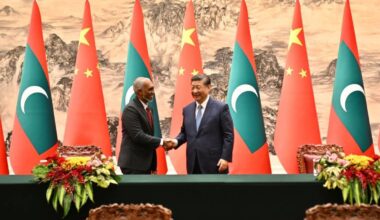I’ve been watching the situation between Pakistan and Afghanistan unfold with a sense of disbelief. The decades-long tension between these two countries has reached new, alarming heights, and it feels like the storm is finally breaking. For those of us on the outside, it’s easy to read headlines and hear reports, but the reality on the ground is much more complex, and far more dangerous.
In recent weeks, the situation has taken a drastic turn, with the Taliban launching a series of bold and deadly attacks on Pakistan’s border posts. The strikes have not only killed dozens of Pakistani soldiers but have also shaken the region to its core. This isn’t just another border skirmish; it’s a full-blown escalation that is leaving both nations in turmoil.
The Catalyst for Conflict
The roots of this conflict lie in the long-standing rivalry between the two countries, dating back to the drawing of the Durand Line in 1893. While Pakistan insists the border is legitimate, Afghanistan has consistently referred to it as an “imaginary line,” refusing to accept it as a valid division. This dispute has been a flashpoint for tensions, with both sides claiming territorial rights.
But in recent weeks, the situation has worsened dramatically. It all started when the Pakistan-based Tehrik-i-Taliban (TTP) group, a terrorist organization, killed 16 Pakistani soldiers. In retaliation, Pakistan launched airstrikes in Afghanistan’s Paktika and Khost provinces, which reportedly killed over 50 people, including civilians. This triggered a swift and deadly response from the Afghan Taliban.
A Devastating Counterattack
The Afghan Taliban’s response to Pakistan’s airstrikes was swift and violent. On December 28, Taliban forces launched an attack on Pakistani military posts near the Durand Line. The assault claimed the lives of 19 Pakistani soldiers and sparked a wave of panic in the region. Afghan forces didn’t stop there, they set fire to several Pakistani military posts in the Ali Shir district of Khost province and captured two additional posts in the Dand-e-Patan district of Paktia province. It’s clear that the Taliban has grown increasingly emboldened, asserting their control over regions along the border.
On the Afghan side, three civilians were also killed by mortar shells fired by Pakistani forces in Dand-e-Patan, adding another layer of tragedy to an already deadly conflict. What started as a border dispute has now spiraled into a full-blown military conflict with both sides engaged in heavy clashes, resulting in significant casualties on both sides.
The Role of the Tehrik-i-Taliban
What’s even more troubling is the role of the Tehrik-i-Taliban Pakistan (TTP), the group that has long posed a threat to Pakistan’s stability. Since the Taliban’s return to power in Afghanistan, the TTP has been emboldened, launching a surge of terrorist attacks across Pakistan. These attacks have only intensified the already volatile situation, further destabilizing the region.
The TTP’s rise is a direct consequence of the Afghan Taliban’s return to power. With the Taliban now firmly in control of Afghanistan, groups like the TTP find sanctuary across the border, using Afghan soil to plan and execute their attacks. Pakistan has found itself caught in a vicious cycle, where it faces constant threats from terror groups operating within its own borders, while also dealing with the rising aggression from the Afghan Taliban.
What Lies Ahead?
As the situation continues to escalate, it’s clear that both Pakistan and Afghanistan are locked in a dangerous standoff. The loss of life and the destruction along the border show that this isn’t just a fleeting flare-up, it’s a new phase in an ongoing conflict that could have far-reaching consequences.
The international community watches as both sides dig in their heels, with no immediate resolution in sight. The growing violence has sparked fears of a larger regional conflict, especially as both countries face mounting domestic challenges. The border clashes between Pakistan and Afghanistan aren’t just about territory, they are about power, influence, and survival. And with both sides unwilling to back down, the situation remains volatile.
For Pakistan, the stakes are high. The Taliban’s assertiveness and the increasing attacks from groups like the TTP only complicate matters. For Afghanistan, the border skirmishes are part of a broader struggle for legitimacy and control, as the Afghan Taliban seeks to solidify its rule and secure its position in the region.
As this war-like situation unfolds, it’s becoming clearer than ever that the region is on the brink of a new chapter of conflict. The next moves from both Pakistan and Afghanistan will determine not only their futures but also the stability of the entire South Asian region.
In the end, what we’re witnessing isn’t just a war of borders, it’s a war for power, identity, and the very soul of these nations. And in this battle, there are no easy answers. The path forward is uncertain, and the toll on human lives continues to rise.










